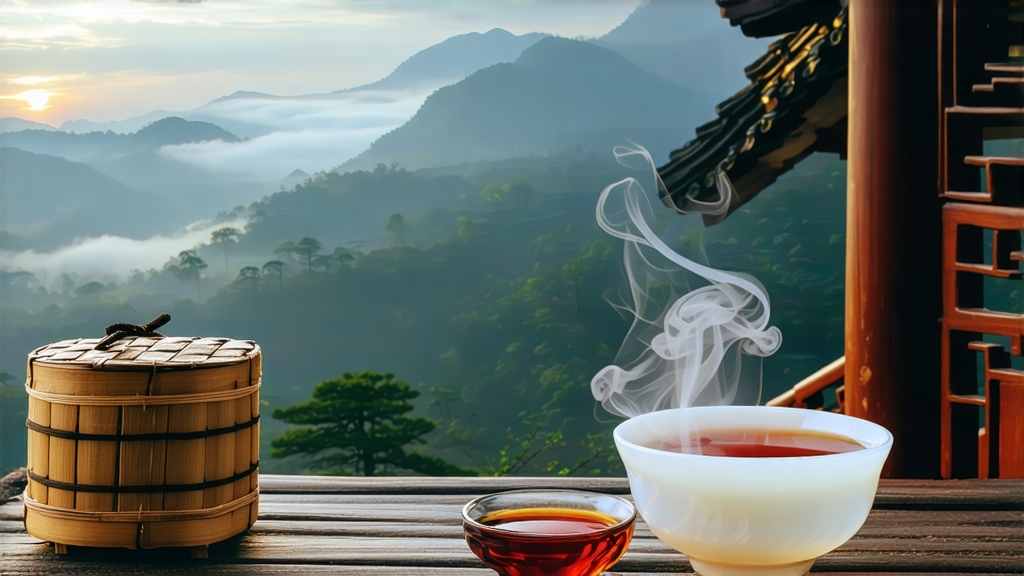
If every family tree has a patriarch, then the entire lineage of black tea scattered across India, Sri Lanka and Kenya bows, however distantly, toward a small village tucked into the granite folds of China’s Wuyi Mountains. There, in Tongmu Guan, the camellia sinensis leaves that first astonished London dockworkers in 1604 still wither above smouldering pine embers. The tea is called Lapsang Souchong—literally “small sort from Lapu Mountain”—and to understand it is to hold the blueprint of every brisk, malted or honeyed black cup you have ever tasted.
History: From Ming Border Guards to London Coffee-Houses
The story begins with accident and urgency. In the late Ming dynasty (circa 1640) Qing soldiers billeted in Tongmu demanded lodging so abruptly that tea farmers could not finish the usual green-tea pan-firing. To prevent spoilage they racked the leaves over open pine fires, rushing them to market. The Dutch, already addicted to Fujian’s rock oolongs, bought the dark, leathery leaf and sailed it around the Cape of Good Hope. By 1662, when Catherine of Braganza introduced tea to the English court, Lapsang Souchong was the exotic leaf in her dowry chest. Samuel Pepys mentions “a cup of the China drink smoked with dry wood” in his 1667 diary; two years later the East India Company listed “Bohea Souchong” at 28 shillings a pound, more than twice the price of finest green tea. Thus the first black tea ever seen in Europe was not merely black—it was smoked.
Terroir: Why Only Tongmu Can Birth True Zheng Shan Xiao Zhong
UNESCO designates the 60-square-kilometre core of Wuyi as a World Heritage biosphere. Its altitude (600–1,200 m), subtropical monsoon climate and mineral-rich laterite soil force the tea bush to struggle, concentrating polyphenols and aromatics. Crucially, the village lies inside a military-grade conservation zone where outside tea leaf is prohibited and every truck is inspected. This legal “terroir lock” means that authentic Lapsang Souchong—called Zheng Shan Xiao Zhong—cannot legally be produced anywhere else in the world. Leaves picked beyond the checkpoint, even if smoked with identical pine, must be labelled “wai shan” (outside mountain) and sell for a fraction of the price.
Leaf Grades: From Souchong to Congou
European traders coined the term “souchong” for the fifth leaf up the stem—larger, tougher and ideal for rolling without breaking. Higher, tender tips became “pekoe”; broken grades became “fannings.” Today Tongmu farmers still speak of three internal grades:
1 Imperial Needle (Jun Mei): only buds, picked pre-Qingming, smoked for seconds just to perfume.
2 Classic Lapsang (Zheng Shan): one bud and two leaves, withered over pine fires, fully smoked.
3 Wuyi Congou: third and fourth leaves, lightly withered, twisted rather than smoked, aimed at modern palates that fear campfire notes.
Craft: The Eight Stages of Pine-Fire Alchemy
Authentic production follows a calendar unchanged for 380 years.
1 Plucking: dawn mist, no rain, 14–16 °C, 5 cm standard length.
2 Withering: leaves are laid on bamboo screens set 1.5 m above pinewood embers in an earth-floored “qing lou” loft. Temperature 28–30 °C, humidity 65 %. The smoke is cool enough not to cook the leaf, only dehydrate and perfume it.
3 Rolling: 55 minutes on a 50 cm diameter bamboo tray; cell rupture must reach 85 % to release enzymes.
4 Oxidation: rolled leaf is piled in pine-wood boxes covered with wet cloths. Four hours at 24 °C turns catechins into theaflavins, giving the coppery colour and malt aroma.
5 Smoking & Firing: the most iconic step. Fresh pine logs (Pinus massoniana) are split, dried for six months, then lit and immediately smothered to produce resinous smoke